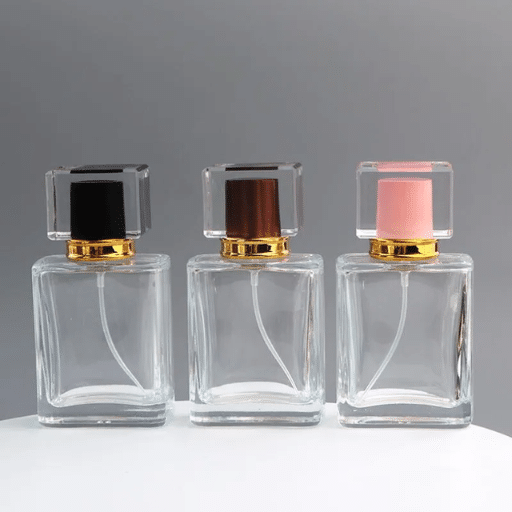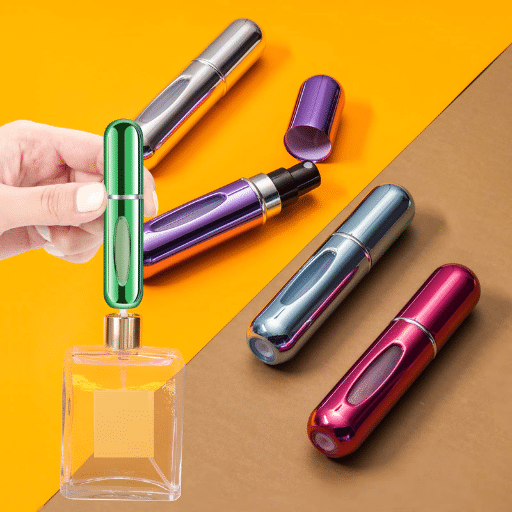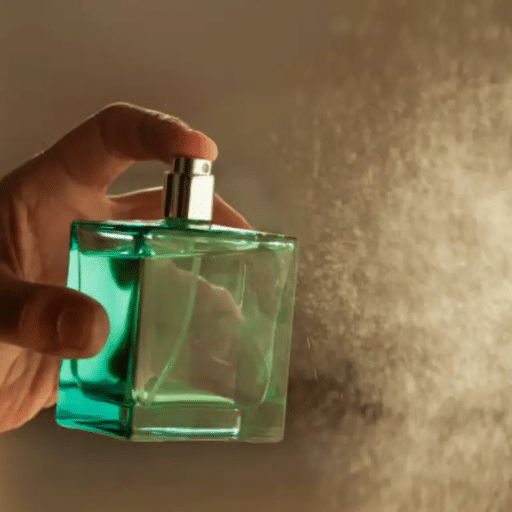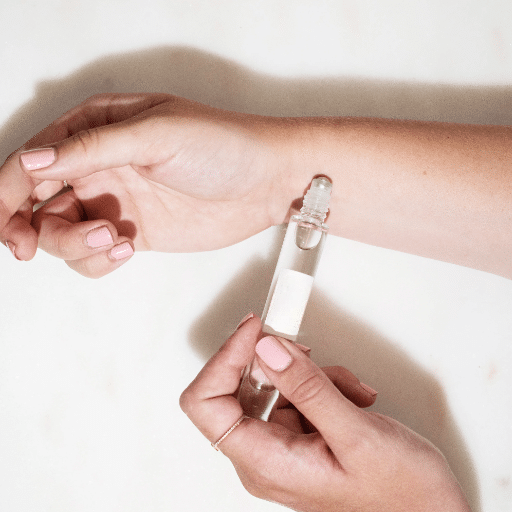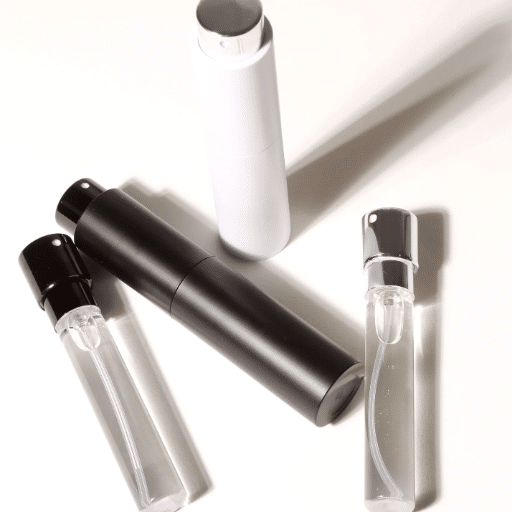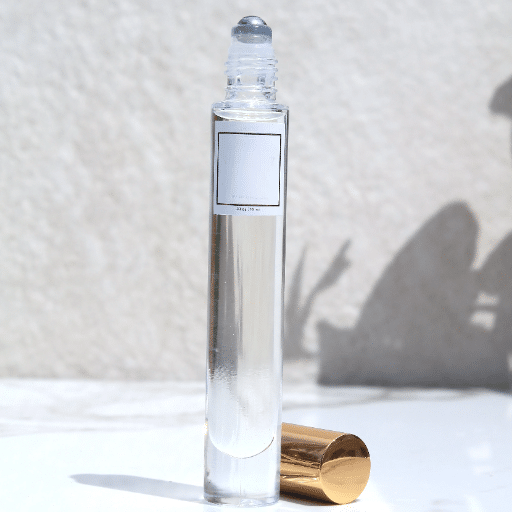If you’re seeking a fragrance encounter that you and others won’t forget soon, the bottle might play a crucial role as an essential aspect of the fragrance itself. Thus, choosing the right wholesale perfume bottles is the most critical factor for both companies and individuals in the perfume industry. These bottles not only serve as essential containers for your fragrance products but also play a significant role in the brand, being aesthetically pleasing and highly attractive to customers. The range of designs can go from simple and elegant to very detailed and even over-the-top; thus, the choices of designs could make the process both enjoyable and overwhelming. This article will examine the different types of perfume bottles available in the wholesale market, guiding you in selecting the best fit for your needs, whether you are a small business owner, an artisan perfumery, or a retailer in search of bold packaging solutions that attract attention. Let’s get started on checking out some tips that will turn your fragrance display into a powerful method for gaining more customers!
Understanding the Wholesale Perfume Container Market
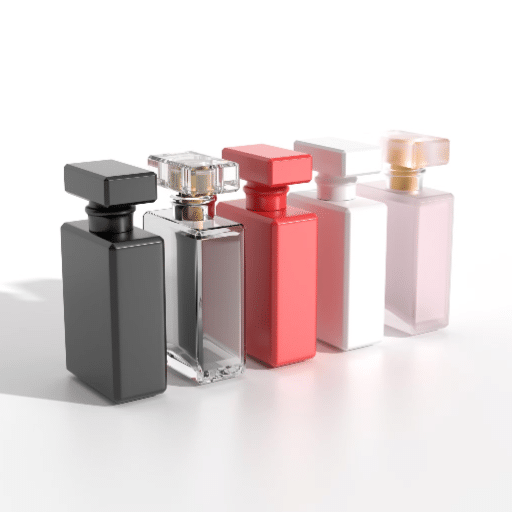
The perfume container industry is vast, offering different solutions for different requirements in terms of materials, sizes, shapes, and designs. The glass bottle is the most common type because it can hold a variety of fragrances without altering the chemical composition due to the special bonds within the atoms themselves. The primary advantages of plastic containers are that they are lightweight and can be produced at a very low cost, making them ideal for manufacturing small sizes for travel or lines of cosmetics that are pocket-friendly. Moreover, it is possible to get stimuli from frosted finishes, metallic touches, or custom embossing to create deluxe or personalized packaging solutions. In choosing the right packaging solutions for the products you sell, you should consider aspects such as the target audience, image, and usability to ensure they align with the product’s identity and purpose.
Current Trends in Perfume Packaging
The primary focus of perfume packaging has shifted towards sustainability. The number of brands expressing their wish through eco-friendly packaging is increasing rapidly. To protect Mother Earth, they consider either recycling or using all three types of options: recyclable, biodegradable, and refillable. Indeed, the use of materials like glass, bamboo, and recycled plastics has become part of the industry trend, which emphasizes being both “eco-friendly” and elegant. At the same time, the consumer was responsible for the purchase, and thus the product with the environmentally friendly package was not necessarily the same; in that case, the minimalist package won out. Packaging that is straightforward and intentionally free of extra materials, designed with the people’s best interest in mind, is also starting to become more popular among environmentally responsible consumers.
Benefits of Bulk Purchasing for Fragrance Brands
Cost Efficiency
Buying a large number of items at the same time can help the perfume companies to have lower costs per item. Brands can maximize economies of scale by obtaining direct materials or ingredients in large formulation batches, potentially leading to significant savings. In many cases, suppliers offer 10% – 25% discounts or even more on large orders, resulting from lower production costs in the long run.
Ensured Supply Availability
Fragrance brands that buy in bulk can have a continuous supply of the primary materials, like oils, alcohol, and packaging. This means that the possibility of stockouts is eliminated, and the brands can keep the production going at an equal pace, even during high volume or supply chain disruptions.
Reduced Shipping Costs
Bigger quantity shipments reduce the number of times the materials are transferred, thus lowering the transportation fees. Consolidating shipments helps fragrance brands slash up to 15%-20% of their shipping bills, which in turn would mean they are moving more sustainably on the logistics front.
Improved Inventory Management
Bulk buying helps increase inventory levels so that there is never a shortage of products to overwhelm customers. This is particularly useful during the high season or when a new product is launched and demand is very high.
Sustainability Benefits
If a large number of goods are ordered at one time, there is no need for frequent deliveries, which, in turn, reduces carbon emissions associated with transportation. Another aspect is that bulk packaging usually requires less raw material, aligning with the environmentally friendly practices that customers increasingly value. For example, using bulk materials can reduce the waste of 30% of the packaging.
Consistency in Quality
Getting the inventory needed in vast quantities from your well-established suppliers assures that the quality of the materials is up to a high standard in all production lots and seasons. This uniformity creates a bond between the brand and the shopper, making the fragrance or feel of the product a constant that the shopper can always rely on.
Emerging Innovations in Perfume Containers
In the packaging of perfumes, there is a noticeable and innovative wave of design changes that merge aesthetics, functionality, and sustainability. The newfangled material is one of the designs. Another design adaptation is to facilitate the recycling of the material, which users will naturally do. The fragrance marketing agencies are on the lookout for more. They have already started to accept and adapt to these environmental changes in shopping preferences.
There is a steady stream of digital development, and online purchasing has been improving lately. It will only take a little more time for the trend to reach mainstream buying behaviours and thus be considered utopic. The brands are taking a step forward in utilizing this digital-friendly medium to make their products more widely available to consumers.
Additional features from Innovation include small, mobile-friendly bottles that let you keep up with the fragrance of the containers you have always known. Hence, with its convenient magnetic closures and no-spill designs, it protects the original scent even during transitions between places. All these improvements are enabling the perfume package to grow from the desired function to an indispensable part of the consumer encounter.
Types of Perfume Containers
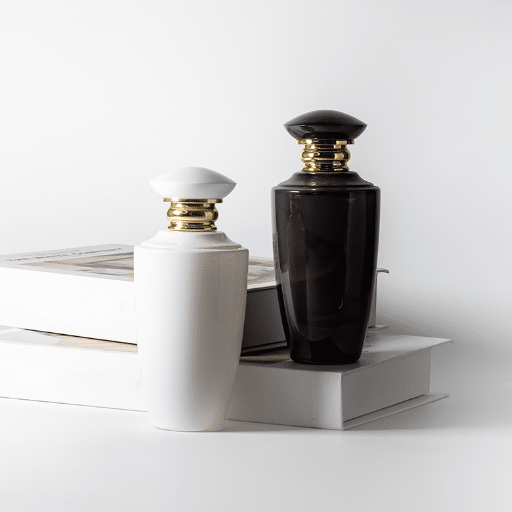
Glass Bottles
The most common and oldest form of perfume packaging is the glass bottle. It is cherished for being beautiful, strong, and scent-friendly since no chemical reactions can occur between the fragrance and the bottle’s interior.
Rollerball Containers
The roller bottle is the compactest and the most travel-friendly type of perfume packaging and allowing quick skin up-dating. Choosing small application spots for the perfume contributes to the reduction of perfume waste.
Spray Bottles
Bottles and sprays are equipped for the even and controlled spread of fragrance. Full-size and travel-sized perfumes are the two most widely distributed products in these forms, offering users a high level of convenience and flexibility.
Solid Perfume Cases
They are mainly used for packing solid perfumes, also known as waxy or balm perfumes. Solid perfumery is encouraged, primarily used in compact, refillable cases that are reusable and ideal for discreet application.
Refillable Containers
Eco-friendly refillable bottles, an alternative to traditional containers, are preferred by many people because of their production method and material. These are gaining popularity and are likewise considered as the upcoming containers for the cosmetic market.
Exploring Glass Perfume Bottles
For centuries, glass perfume bottles have been beautiful and elegant, not only for their elegance but also for their remarkable ability to keep the fragrance authentic, making them desirable. These attractive bottles are often made of high-quality glass, which prevents any chemical reactions with the perfume, thereby ensuring that the scent remains unchanged for a long time. Contemporary glass perfume bottles are mostly equipped with complicated patterns and artistic details, besides being very useful they can also be collectible. Also, for some time now, the trend of going green has impacted the industry. This means that the materials used in manufacturing glass bottles are part of recycling, which is a significant step in reducing the number of products that go to waste. Moreover, glassware can be shaped and sized in infinite ways, allowing for different products that meet everyone’s taste worldwide. The already mentioned advantages of glass perfume bottles in the fragrance industry make them the supreme, quintessential, and practical solution.
Plastic vs. Glass Perfume Bottles
| Parameter | Glass Perfume Bottles | Plastic Perfume Bottles |
|---|---|---|
| Durability | Fragile, prone to breakage | Flexible, less prone to damage |
| Environmental Impact | Eco-friendly, recyclable | Non-biodegradable, higher pollution |
| Aesthetic Appeal | Elegant and luxurious look | Simple, less premium appearance |
| Weight | Heavy | Lightweight |
| Cost | Expensive to manufacture | Cost-effective |
| Reusability | High, reusable for other purposes | Limited reusability |
| Chemical Resistance | Resists chemical reactions | Prone to absorb chemicals |
| Customization | Easily molded into unique designs | Simple, mass production-friendly |
| Longevity | Durable for long-term storage | May degrade over time |
| Sustainability Effort | Increasing recycled material use | Limited focus on recyclability |
Choosing Between Refillable and Disposable Containers
When someone chooses between refillable and disposable containers, environmental footprint, price, and necessity are among the most significant factors. The most common reasons for preferring refillable containers are their ecological friendliness, as they can be reused repeatedly, reducing the total amount of waste created. Refillable containers are usually made to last and can withstand long-term use, making them a suitable choice for environmentally conscientious individuals above all. Moreover, the new techniques employed in manufacturing have increasingly used recycled materials, directly impacting the production of refillable containers and further contributing to sustainability.
Even though disposable containers are well recognized for their comfort and cheap price, they are especially popular in industries that require mass production. The containers are so light that they are easy to transport to any location where they are needed. They are often used only once, which is why they are perfect for takeaways and industries like food and beverage. Nevertheless, the limited reusability of the containers and their causing the waste buildup are the main environmental problems related to their use. The production is mainly based on suitability and cost, with little emphasis on recyclability compared to returning options, which highlights a significant contrast.
Sourcing Perfume Containers Wholesale
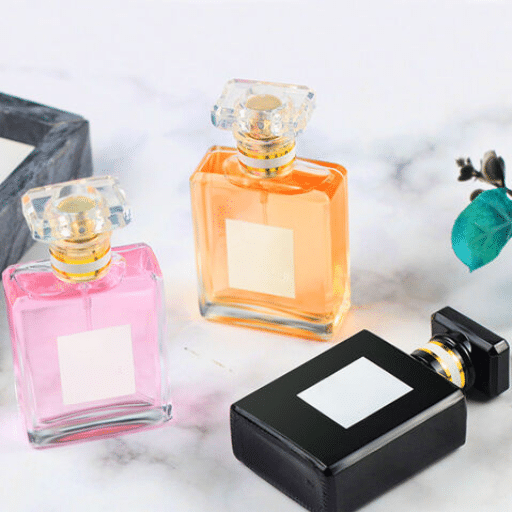
When buying wholesale perfume containers, consider the cost, quality, and reliability of the supplier. Seek out suppliers that specialize in the packaging of perfumes because they usually have a vast selection of different designs, materials, and sizes. The glass containers are a very popular choice because of their long life and “top-drawer” looks, but plastic is cheaper and much easier to transport. Always give preference to the suppliers who provide samples for testing and never make a bulk purchase without first checking the quality. Moreover, suppliers should be chosen who are committed to recycling and, for example, offer plant-based products. A close partnership with a well-established supplier guarantees uniformity and punctuality in your business’s deliveries.
Finding Reliable Suppliers for Wholesale Perfume Bottles
To identify the most trustworthy vendors for wholesale perfume bottles, one should take into consideration their track record and tenure in the industry. Check for suppliers who have been involved in businesses similar to yours and have received positive testimonials, as such moves may lead to more profound insights. A check on the certifications and their compliance with industry standards is also essential. This is to ensure the quality and safety of materials that are being sold.
Choose a supplier with an extensive range of products that will not only meet but exceed your needs — from custom-designed glass bottles to high-end options or low-priced plastic bottles. Also, look for suppliers that offer minimum order quantities (MOQs) that are malleable rather than rigid, depending on your warehouse and operational requirements.
To stay informed, one must follow the trends of the sustainable packaging market and choose suppliers who combine an eco-conscious approach in their practices, such as using biodegradable or recycled materials. Making a long-term agreement with a trusted supplier can result in advantageous pricing and ensure there will be no shortage of products to meet demand.
Tips for Evaluating Quality in Wholesale Glass Containers
Glass Thickness and Durability
Check if the glass is thin, as thin glass is more likely to get broken. It is suggested that the container must have a uniform thickness and no points of weakness. Specifically, it requires a thickness of at least 3mm for reliable storage that is young and neat.
Clarity and Purity
The crystal-clear quality of the glass is the best indicator of high quality. Substances other than pure glass in the material are visible signs of poor manufacturing and might lead to cracks and reduce the attractiveness of the container.
Quality of Seals and Closures
The next consideration, for safety and quality, is the compatibility of the container’s special features, such as the lids or caps, with the needs of the product or drink to be contained. Container deformation is another critical issue to consider, as providing an airtight seal is one of the factors in this process. Inspect the surface of the spout and ensure there are no bubbles.
Compatibility with Usage Purpose
Confirm that the glass is in line with the industry standards, as it has been designed. For example, food storage containers are supposed to be FDA approved, and the glass used in them should not contain any heavy metals.
Heat and Cold Resistance
Test whether the glass can withstand a temperature change without breaking. The glass must be safe to put in the freezer without exploding and still resist fire at high temperatures. Look for the words “freezer-safe” and “heat-resistant” on the package, as these features guarantee the usage of either cold or hot glass.
Manufacturer Certifications and Standards
Look for ISO 9001 certifications of manufacturing quality to ensure that the glass is safe and meets industry standards in every aspect. Therefore, the product will come from the best-qualified manufacturer or supplier.
Negotiating Prices and Terms with Suppliers
Negotiating contracts with glass vendors requires a lot of preparation; thus, it is essential to do thorough research first. Determine the industry average cost, the market situation, and what your competitors offer to have a basis for comparison. With this knowledge, you can make a reasonable request and negotiate a discount for bulk buying or receive a price offer for loyalty in long-term cooperation.
Moreover, having a detailed payment agreement can make the negotiation process easier. Try discussing varied plans like spreading payments over extended intervals, breaking down the amount into installments, or giving a discount to customers who pay early. Not only that, but it would also be a good idea to cover any additional costs in due course, such as the cost of delivery or packaging, so as not to have to worry about extra expenses later on.
At last, verify the presence of such needful details as the time required before the order is delivered and the least number of units that can be bought in the contract. The supplier relationships can also be improved by accepting changes to the production schedules or helping in times of urgent orders. However, fostering open communication and a collaborative approach will yield better deals for the business while keeping the supplier partnership as productive as before.
Customization Options for Perfume Packaging
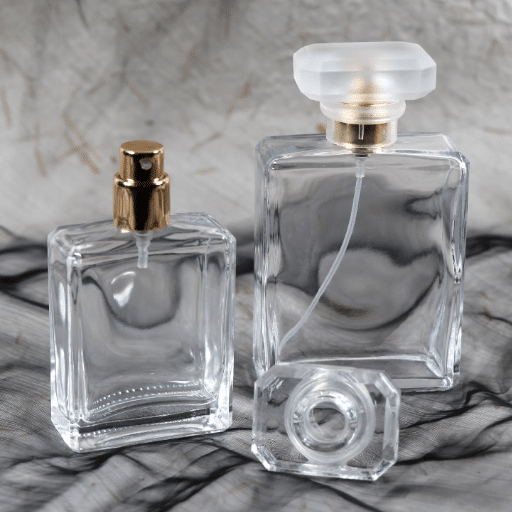
The flexibility of perfume packaging customization offers brands an opportunity to lead the industry by combining customer-friendly experiences with artwork and handmade luxury in the market. Key elements of customization include:
- Bottle Design – Consider the bottle design as a comprehensive solution to issues related to brand identity and aesthetics, where it is not just about the design but also the story behind it.
- Labeling and Branding – Appropriate your brand with custom labels, logos, and typography to make brand recognition soar.
- Colors and Finishes – The choice could be within the range of concrete color schemes or finishes, such as matte, glossy, or metallic, all connected to the perfume’s theme or target audience.
- Box and Outer Packaging – Once more in the realm of the aesthetic, with the opening of the pantheon of creative imagination of your company, come up with your own bespoke boxes, using textures, patterns, or eco-friendly materials, to satisfy your needs.
- Accessories – Let’s add details like ribbons and seals on perfume boxes, among other things, to enhance the overall look and feel for the customer-to-be.
These are all the things that, in addition to visual and tactile enjoyment, presentation, and brand identity, will improve customer satisfaction.
Creating Unique Designs with Custom Perfume Bottles
The initial activity in creating a personalized perfume container that stands out involves blending the brand story, aesthetic appearance, and features, and product usage into a bottle. Sustainability is a key topic in the design of this product, as it requires using materials from glass recycling and various methods to produce and utilize biodegradable components. This not only leads to environmental care but also to the creation of items that the eco-conscious consumers demand. On top of that, when attention to detail is paid, such as with the use of sculptural and unique engraving forms, the bottle’s quality and the luxurious feel that can be touched become more apparent.
The progress of technology has greatly benefited 3D printing itself. With the help of 3D printing technology, more innovative and intricate designs are now possible, granting brands the liberty to challenge the market with adventurous, out-of-the-box designs and structures. In the same line of thought, personalization opens up another big opportunity for brands to connect with consumers’ emotions. The custom engravings, initials, and refillable bottles that brands offer can all be factors that provide an emotional connection, which in turn would likely affect brand loyalty significantly. Finally, the concept of the bottle’s design must serve as a conductor between practicality and the artist’s vision; hence, the bottle itself must become an icon of the fragrance it holds.
Popular Styles and Sizes for Perfume Bottles
Different consumers’ tastes and practical requirements justify the existence of a variety of styles and sizes of perfume containers. Possibly, the most prevalent of them all is the traditional glass bottle, often designed with plain lines and a discreet elegance that attracts those for whom the most important value is a classy and timeless appearance. However, an increasingly common choice is represented by bottles with geometric or even sculptural shapes, giving a relatively new but no less elegant and luxurious aesthetic. Travel or sampling is a widespread use of miniature bottles; hence, these tiny, sleek 15ml or less bottles are highly appreciated. On the other hand, for people who are heavy perfume users or love to give luxury presents, 100ml bottles are ideal.
Consumer demand is also a major driving force in gum and mint production. Apart from sustainability, eco-friendly products have been highly valued; thus, refillable bottles are becoming increasingly popular, leading people to buy the same stylish vessels and throw away less. Despite their fragrance application, roll-on bottles and sprays are still in demand, but sprays are the top choice due to their easy and systematic method of spreading perfume. On the market, there are various kinds and sizes of containers, which help companies reach a wide range of product styles and markets with different tastes.
How to Incorporate Brand Identity into Packaging Solutions
To fully enable brand identity in packaging solutions, companies must consider the target audience and the brand name while maintaining the aesthetic and ensuring it is easy to recognize. Brand statements such as color schemes, logos, typography, and imagery need to be in line with the central values and message of the brand. For instance, it is an excellent idea for brands that support the environment to use recycled materials, calm natural colors, and a straightforward design to indicate their value for nature.
In addition, it is essential to know what consumers prefer at present. According to studies, consumers are very much into products tailored to their individuality through packaging (among other things), which also helps with customer retention. These two seemingly contradicting elements of packaging definitely have the potential to work together to the company’s advantage. Embedding smart tech in the packaging — like QR codes or NFC tags — not only enables customers to interact with the product and brand, but also leads to cool pack features that can include bottlenecks of the supply blood being highlighted, the how the product travelled vertically from the filling process or even the factory and so forth behind-the-scenes pass that may include checking the public engagements from the brand(all social media and more). One can only imagine how embedding creativity would enhance the product’s packaging and, at the same time, become a powerful marketing tool that would help effectively deliver the brand’s message.
Practical Considerations When Choosing Containers
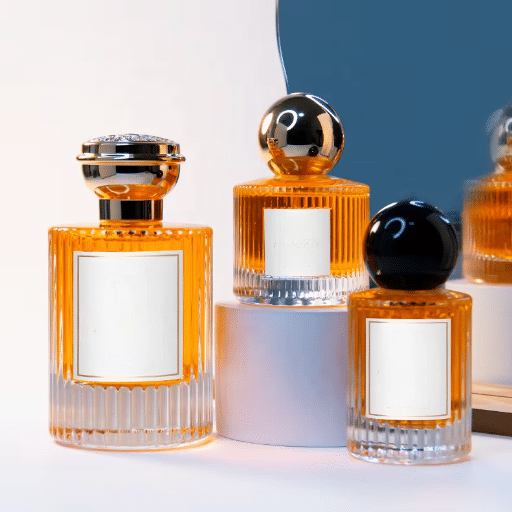
One should prioritize the functionality, sustainability, and cost-effectiveness of the container when it comes to selection. Functionality ensures that the container prevents interaction between the product and the surrounding environment and protects the product for suitable periods. So always check the container size, shape, and material in relation to the product use.
Sustainability has become an essential issue that we can’t neglect. The best thing you can do is to choose materials that can be recycled, reused, or decomposed quickly and safely, minimizing environmental suffering. This aligns with what the majority of consumers want, and, for the same reason, the regulations are becoming increasingly eco-friendly.
Lastly, consider the total cost, including the production costs and transportation costs. The material’s resistance and lightness can serve as an axis of control and be very beneficial in terms of cost, particularly for shipping; thus, the goods will remain very efficient. The overall decision to choose a product that aligns with both the product and brand values can be balanced by the above considerations.
Understanding Vials, Atomizers, and Sprayers
| Key Point | Vials | Atomizers | Sprayers |
|---|---|---|---|
| Primary Use | Store small liquid quantities | Dispense fine mists | Spray larger liquid volumes |
| Common Materials | Glass, plastic | Plastic, metal | Plastic, metal |
| Capacity Range | 1-10 ml | 5-50 ml | 50-500 ml |
| Ideal Applications | Fragrances, essential oils | Perfumes, skincare products | Cleaning solutions, haircare |
| Dispensing Mechanism | None, pour or drop | Pressurized mist via pump | Trigger or pump action |
| Reusability | Often single-use | Typically reusable | Generally reusable |
| Portability | Highly portable | Moderately portable | Less portable |
| Environmental Considerations | Often recyclable | May include non-recyclable parts | May include non-recyclable parts |
| Cost Range | Low to moderate | Moderate | Moderate to high |
Evaluating Packaging Solutions for Essential Oils
In the case of the selection of packaging for essential oils, the material with the property compatible with the oils, its functionality, and green aspect all are main factors to be considered. Glass containers or bottles that are dark amber or cobalt blue are frequently seen as a perfect choice to preserve the quality of essential oils through the action of shielding them from the harmful and deteriorating effects of UV light and oxidation. Yet, there are also lightweight plastic counterparts, such as PET, that can provide a solution more robust against breaking. However, they might not be as good as glass in terms of purity when it comes to the long-term maintenance of oils.
The use of dispensing mechanisms such as dropper caps and pump sprayers also remains necessary. Dropper caps enable the measurement of even the slightest amount of the product for precise applications. In contrast, pump sprayers are ideal for uniform dispersion, such as in blends of perfumed oils or room sprays. The availability of such various types of caps ensures that the user can select the most adequate one, resulting in a positive experience and less product waste.
When it comes to the environment, there is a growing trend towards using recyclable and reusable packages. The companies are also looking for compostable solutions to be more eco-friendly and reduce their carbon footprint. The use of these helpful packaging solutions, which are environmentally friendly, makes a product more appealing to the greener public, as one does not have to choose between a good product and one that contributes to saving the planet. With this kind of mindset, innovation is pushing the industry toward more diversity and sustainability through natural oil packaging solutions.
Reference Sources
Challenges and Opportunities To Establish A Niche Perfume Company In France
Summary: This study explores the market dynamics of niche perfume companies in France, focusing on the role of wholesalers in the supply chain. It highlights how the size and design of perfume bottles influence consumer preferences and market positioning.
The Fragrance of Cyber World 2080: A Perfume Forecast
Summary: This futuristic study examines emerging trends in the perfume industry, including the demand for innovative bottle designs and cost-effective packaging. It discusses how social and economic changes influence wholesale markets and consumer preferences.
Frequently Asked Questions (FAQs)
How can I find quality empty glass perfume bottles in bulk?
When in the market for quality perfume glass bottles in bulk, the task may be easy, provided you are well acquainted with the right sources. You can find a variety of glass options, such as clear and frosted types, in the stock of online wholesalers. Always remember to get the ones that suit your needs, whether they are atomizers, dropper bottles, or fine mist sprayers. Try to find the lowest-priced items in the market and provide the quickest way to deliver your order. Furthermore, you should also look at the reviews or ratings given by other customers to see how good the products actually are.
What types of fragrance packaging are available for custom perfume bottles?
There is a broad range of scent packages for customized bottles, increasing the creative freedom of brands. Various styles are at the buyer’s disposal, including fancy packaging made from high-quality glass or with the addition of aluminum. Closure provider usually provides spray pumps, mist sprayers, or imported steel rollers, which are basic items in this industry. Also, other customization alternatives, such as screen printing, will create a strong brand image. Whether you’re a classicist or modernist, you have many choices to develop and be part of the perfect perfume packaging for yourself.
Are refillable glass perfume bottles a practical option?
There is an increasing demand for refillable glass perfume bottles, and consequently, they are growing in popularity. This type of bottle is so popular primarily because of its sustainability and cost-effectiveness. The most significant advantage of refillable glass bottles is that they can be used for quite a long time, thus reducing waste and eliminating the need to burn or melt beer-like packaging materials. Furthermore, they are usually provided with different refill option possibilities, such as perfume purchased in large quantities and transferred into your smaller refillable container or sample perfume vials. Moreover, refillable bottles of various sizes and styles, such as 15ml and 50ml, are already available in the market and efficiently cater to consumer needs.
What should I consider when choosing perfume bottles wholesale?
Choosing perfume bottles wholesale can be a complicated task if not analyzed with multiple factors in mind to meet the requirements of the company you represent. Initially, you should ascertain the amount of perfume to be put in the bottles—there are various choices from small 8ml bottles to big 100ml ones. The material used in making the bottle also plays a significant role, as glass provides a luxurious look and better protects the scent compared to plastic. Besides, the form and function of the bottle are essential, so you need to decide if you prefer it as an atomizer, a spray pump, or a roll-on. Apart from this, characteristics like screen printing and unusual cap designs can help make your brand noticeable.

